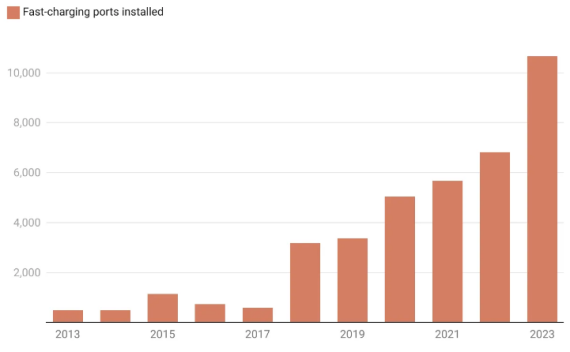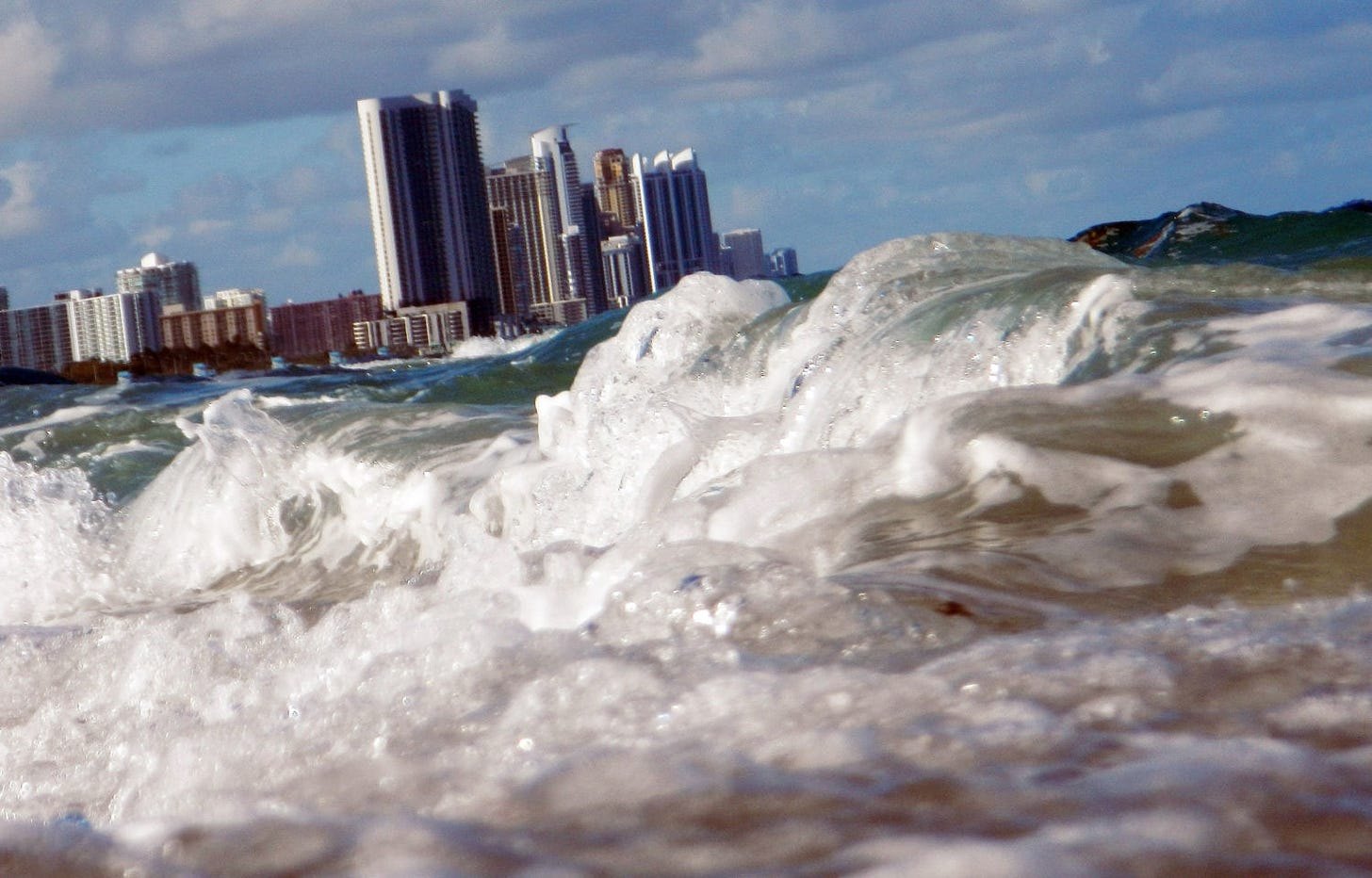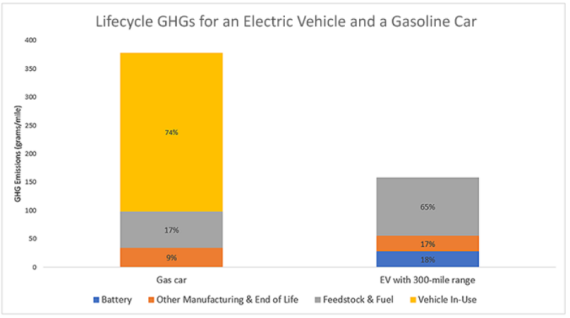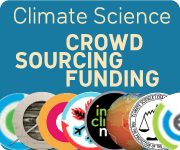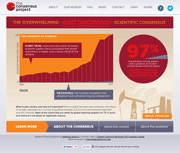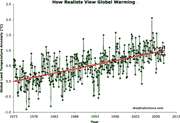If you’ve been following our writing this year, you know it’s a dire time for weather, climate, and science overall in the U.S. Budget and staff cuts at NOAA, FEMA, and more threaten to cut our ability to prepare for and respond to weather disasters.
In the midst of all that, hurricane season is coming, and we’re also facing budget limitations at Yale Climate Connections as the philanthropy world tries to make sense of the new administration.
Season after season, readers like you have shown us that you value our coverage of hurricanes and other extreme weather. You’ve used it to stay informed and keep your loved ones safe. Now we need your help.
We are aiming to raise $10,000 to support our Eye on the Storm hurricane coverage this summer and fall. Your donations will go directly to paying journalists like Bob Henson and putting that coverage in front of people who are in the path of storms. Will you sign up to be a sustaining donor today?
We’re raising $10,000 to support our life-saving extreme weather coverage. If you sign up by May 31, 2025, to be a sustaining donor, which means you’ll contribute each month, we’ll invite you to an exclusive virtual conversation with our meteorologists Jeff Masters and Bob Henson. Will you become a sustaining donor today?

To become a monthly donor, make sure you’ve selected the ‘Sustaining gift” option on the Yale donation form. Note that if you set up your donation to be anonymous, we won’t have your information to invite you to the conversation.
Sabin 33 #30 - What is the net effect of EVs on climate change?
Posted on 27 May 2025 by Ken Rice
On November 1, 2024 we announced the publication of 33 rebuttals based on the report "Rebutting 33 False Claims About Solar, Wind, and Electric Vehicles" written by Matthew Eisenson, Jacob Elkin, Andy Fitch, Matthew Ard, Kaya Sittinger & Samuel Lavine and published by the Sabin Center for Climate Change Law at Columbia Law School in 2024. Below is the blog post version of rebuttal #30 based on Sabin's report.
EVs are essential to reducing greenhouse gas (GHG) emissions and the use of fossil fuels that cause those emissions1 (also Singh et al. 2023). The Environmental Protection Agency has found that EVs typically have lower lifecycle emissions than traditional gasoline-powered cars, even when taking into account the emissions released when manufacturing EVs and generating power to charge them.2 The Intergovernmental Panel on Climate Change has further explained that “[t]he extent to which EV deployment can decrease emissions by replacing internal combustion engine-based vehicles depends on the generation mix of the electric grid although, even with current grids, EVs reduce emissions in almost all cases.”3 The key reason why EVs reduce emissions in almost all cases is that they are inherently more efficient than conventional gasoline-powered vehicles: EVs convert over 77% of electrical energy to power at the wheels, whereas conventional vehicles only convert roughly 12%–30% of the energy in gasoline to power at the wheels.4
Assuming average U.S. grid emissions, the average lifecycle GHGs associated with a gasoline-powered car that gets 30.7 miles per gallon are more than twice as high as those of an EV with a 300-mile range.2 The figure below from the EPA shows that the lifecycle GHGs for the gasoline-powered car under this scenario are between 350 and 400 grams/mile, whereas the lifecycle GHGs for the EV are only slightly above 150 grams/mile.
Figure 17: Break down of lifecycle emissions for electric and gasoline cars. This figure is based on the following assumptions: a vehicle lifetime of 173,151 miles for both the EV and gas car; a 30.7 MPG gas car; and U.S. average grid emissions. Source: EPA.
Most importantly, EVs’ lack of tailpipe emissions and heightened efficiency more than offset the emissions required to manufacture EV batteries: these emissions are offset within 1.4-1.5 years for electric sedans, and within 1.6-1.9 years for electric SUVs5 (Woody et al. 2022). These reduced tailpipe emissions not only help to stabilize our climate, but also improve air quality, bringing multiple health benefits including reduced rates of childhood asthma, particularly in urban areas.
The emissions offset by transitioning to EVs vary based on the carbon intensity of the energy grid. A study from Munich’s Universität der Bundeswehr found EVs to have reduced emissions by 72% when powered by Germany’s electric grid, which drew 23% of its electricity from renewable energy in 2021 (Buberger et al. 2022). But the researchers projected that a 100% renewable energy grid would have allowed EVs to reduce emissions by as much as 97% (Buberger et al. 2022, Wolfram et al. 2021). And the U.S. grid is getting cleaner over time, with a 44% reduction in power sector emissions from 2005 to 2023, meaning that EVs are having an increasingly positive impact on U.S. emissions.6 For those drivers in the United States who would like to ensure that they are charging their EVs with the cleanest possible energy, the Environmental Protection Agency’s Energy Star program helps drivers determine which chargers rely on renewable energy sources.7
The Weather & Climate Livestream
Posted on 26 May 2025 by Guest Author
Wed. May 28th 1pm ET/10am PT to Sun. June 1st 5:30pm ET/2:30pm PT on YouTube:
100 HOURS TO SAVE AMERICA'S FORECASTS
Whether it's tomorrow's temperatures or the sea level in fifty years, Americans need to plan for our futures. For generations, the US government has invested in the science that helps us do so, building one of the greatest meteorology and climate science communities in the world.
In recent months, this community have been thwarted in our mission of serving the public due to substantial cuts and firings. These actions have already hurt our forecasts, endangering Americans as hurricane season approaches. Legally required assessments of the climate are being stopped, and far more drastic cuts are being proposed.
But it's not too late to stop these cuts. Already, public pressure has helped to reopen shuttered weather data centers. To help keep this pressure building, meteorologists and climate scientists from across America want to fulfill our mission by sharing our science with you - so we're coming to your screens, speaking and answering your questions, for over 100 hours, in this science-filled, non-partisan event:
The Weather & Climate Livestream
From Wednesday, May 28th to Sunday, June 1st, join meteorologists and climate scientists from across the US as we share our work, and show you what makes it so vital. We will clarify the impact of the cuts on this research, and answer your questions about weather and climate research in the US. Information on how to watch is coming soon. If you are a scientist who wants to participate, please visit this speakers page to learn more.
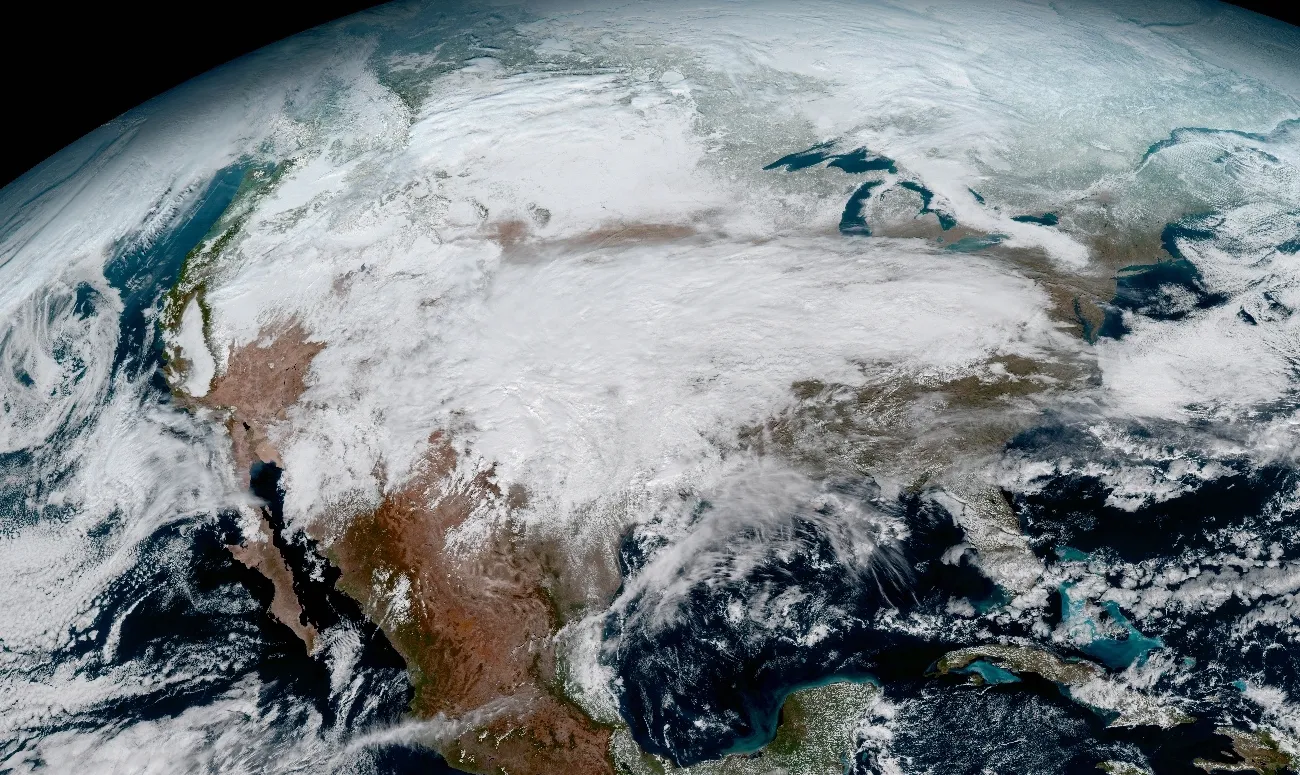
Schedule highlights
2025 SkS Weekly Climate Change & Global Warming News Roundup #21
Posted on 25 May 2025 by BaerbelW, Doug Bostrom
Plugging the Weather & Climate Livestream planned to start on May 28
Skeptical Science can't and shouldn't tell anybody how to behave; our role is to help people make better decisions by being better informed. With that in mind, we're again highlighting the Weather And Climate Livestream initiative started by early career scientists. We hope that as many people as possible are educated how US climate and weather reporting and research make us all safer! Here is information from the event's website:
SAVE AMERICA'S FORECASTS
Whether it's tomorrow's temperatures or the sea level in fifty years, Americans need to plan for our futures. For generations, the US government has invested in the science that helps us do so, building one of the greatest meteorology and climate science communities in the world.
In recent months, this community have been thwarted in our mission of serving the public due to substantial cuts and firings. These actions have already hurt our forecasts, endangering Americans as hurricane season approaches. Legally required assessments of the climate are being stopped, and far more drastic cuts are being proposed.
But it's not too late to stop these cuts. Already, public pressure has helped to reopen shuttered weather data centers. To help keep this pressure building, meteorologists and climate scientists from across America want to fulfill our mission by sharing our science with you - so we're coming to your screens, speaking and answering your questions, for over 100 hours, in this science-filled, non-partisan event:
The Weather & Climate Livestream
From Wednesday, May 28th to Sunday, June 1st, join meteorologists and climate scientists from across the US as we share our work, and show you what makes it so vital. We will clarify the impact of the cuts on this research, and answer your questions about weather and climate research in the US. Information on how to watch is coming soon. If you are a scientist who wants to participate, please visit this speakers page to learn more.
Please check out the event's homepage to learn more and get the latest information!
This week's roundup is again published by category and sorted by number of articles included in each. We are still interested in feedback to hone the categorization, so if you spot any clear misses and/or have suggestions for additional categories, please let us know in the comments. Thanks!
Stories we promoted this week, by category:
Climate Policy and Politics (6 articles)
- Trump`s USDA tried to erase climate data. This lawsuit forced it back online. The agency quietly removed web pages on rural energy, climate-smart agriculture, and federal loans — until farmers sued. Grist, Frida Garza, May 15, 2025.
- Vandalism, with a plan It's hard not to spot a pattern in how the US government's climate research capacity is being degraded. The Crucial Years, Bill McKibben, May 17, 2025.
- With its climate progress under assault, California takes up a multipronged defense President Trump has made specific threats to California’s environmental efforts, including its vehicle emission standards and cap-and-trade program. Climate , Hayley Smith, May 18, 2025.
- Climate targets are only as good as the action behind them. We need to aim higher | Amanda McKenzie How fast we cut climate pollution will define how safe or scary the world becomes as our children grow up The Guardian, Amanda McKenzie, May 19, 2025.
- Godfather of climate science decries Trump plan to shut Nasa lab above Seinfeld diner: `It`s crazy` Over breakfast at Tom’s Restaurant, right below the historic Giss lab, James Hansen calls Doge’s decision a ‘big mistake’ The Guardian, Oliver Milman, May 21, 2025.
- Weather experts worry about a dangerous mix of more tornadoes and fewer meteorologists US weather forecasting is degraded even as climate change makes our "luck" worse. PBS News Hour, Seth Borenstein, May 22, 2025.
Learning what's at stake with the Weather & Climate Livestream
Posted on 23 May 2025 by Doug Bostrom

As any reader is likely aware, in the United States big deletions are being made to the capabilities of a plethora of federal agencies. These include the National Ocean and Atmospheric Administration (NOAA), which has a mission including that of keeping us safer in the case of "bad luck" due to weather. The National Weather Service (NWS) was already operating in an environment of scarcity, and now resources for operational synoptic and forecast reporting capacity are being stripped to the bone and beyond.
But wait: there's more.
Other agencies such as the US Department of Energy (DOE), the National Aeronautics and Space Administration (NASA) and the United States Geological Survey (USGS) are seeing deep cuts to research. Across the entire spectrum of entities, amputations of grants and entire labs are connected by a handful of attributes— and any connection to climate change has emerged as a common factor.
Weather is the working hands and fingers of climate, shaping our daily lives and our future as it unrolls before us. If we don't understand how Earth's climate functions, we'll never fully understand our weather, any more than we could understand how people visited the Moon without our knowing the engineering behind the missions.
It's not possible to accidentally destroy or intentionally suppress climate research without degrading our capacity to make our luck with weather better— and good luck that we make for ourselves is far more reliable than luck only found by accident.
We don't have the type of transparency into the federal government as it's functioning today necessary to understand what's truly driving this destruction of our safety. Our blindness to "why?" doesn't mean we cannot understand how we're being harmed. Our needless hazard and risk are important information for when we have the ability to help decide our path forward, such as during elections.
Scientists from across the spectrum of geophysical scientific practice spanning meteorology to climate are here to help us understand our stakes. In their own words:
"From Wednesday, May 28th to Sunday, June 1st, join meteorologists and climate scientists from across the US as we share our work, and show you what makes it so vital. We will clarify the impact of the cuts on this research, and answer your questions about weather and climate research in the US. Information on how to watch is coming soon."
To be precise: Wed. May 28th 3pm ET/noon PT to Sun. June 1st 7pm ET/4pm PT.
The entire event wil be one click away, on YouTube. It's not the place of Skeptical Science to tell anybody whether ignorance is strength or not, but we encourage you to learn that answer for yourself.
Skeptical Science New Research for Week #21 2025
Posted on 22 May 2025 by Doug Bostrom, Marc Kodack
Open access notables
Shifting Gears in a Shifting Climate: Birds Adjust Migration Speed in Response to Spring Vegetation Green-Up, Amaral et al., Diversity and Distributions
Our results have direct implications for the conservation of migratory bird diversity in Eastern North America. While birds show some plasticity in adjusting migration pace, this flexibility has limits—particularly when green-up occurs unusually early. Coupled with the slow pace of climate change mitigation through policy and behaviour, migratory birds face constrained options. Mismatches between migration timing and peak resource availability at stopover and breeding sites may reduce reproductive success and survival (Youngflesh et al. 2023). Conservation efforts should therefore prioritise the protection and management of key stopover habitats that allow birds to adjust their pace en route and buffer against phenological mismatches (Mehlman et al. 2005). High-quality and abundant stopover sites can support timely arrivals at breeding grounds by providing birds with the resources needed to either resume migration quickly or pause until conditions are favourable.
Funding for this project was provided by the National Science Foundation (grants EF 1703048 and EF 2033263 to D.A.W.M. and M.W.T.).
Shifts in avian migration phenologies do not compensate for changes to conditions en route in spring and fall, Adams et al., Ecology
If the phenologies of birds, plants, and insects shift asynchronously in response to changing climates, then birds may encounter reduced resource availability during migration. We estimated spring and fall 10%, 50%, and 90% cumulative migratory passage dates at 53 weather surveillance radar stations across the US Central Flyway. We determined which conditions (temperature, timing of green-up and dormancy, relative humidity, and enhanced vegetation index [EVI]) explained annual variation in migration phenologies. We also described decadal trends in environmental conditions and whether shifts in migration phenologies were sufficient to compensate for these changes. Annual changes to spring migration phenologies were best explained by anomalies in temperature, with earlier passage in warmer years. Fall migration occurred later on warmer, more humid years with higher EVI and later dormancy. Long-term adjustments in bird migration phenologies did not mitigate their exposure to changing environmental conditions. Although passage dates for all spring migration quantiles advanced significantly (~0.6 days/decade), temperatures on spring 10% passage dates increased, while 50% and 90% passage occurred closer to green-up. In the fall, temperatures increased on 50% and 90% passage dates. By contrast, the advancement of 10% passage (~1 day/decade) prevented early migrants from experiencing the cooling late-summer temperature trend. Warmer temperatures in mid to late fall may lead to earlier fruiting phenology and asynchronies with migratory passage, which occurred later in warmer years. Changes in temperature and land surface phenophases experienced by migrants suggest that resource availability during migration has changed and that adjustments to migration phenologies have not compensated for the effects of changing climates.
This research was funded by the NASA Biological Diversity program number 80NSSC21K114.
Faster recovery of North Atlantic tropical cyclone-induced cold wakes in recent decades, John et al., npj Climate and Atmospheric Science:
Intense winds associated with tropical cyclones (TCs) generate surface ocean cooling in their wakes, which can persist for several weeks in their aftermath. While multi-decadal observations of the sea surface have shown a substantial warming of the ocean, long-term changes in cold wake recovery time remain largely unknown. Here we find a trend toward faster recovery of TC cold wakes in the Atlantic main development region (MDR) since 2001. This is due primarily to a decrease in the strength of the North Atlantic trade winds, which reduces evaporative cooling of the ocean. The faster damping of TC cold wakes has led to a significant increase in the intensification of subsequent TCs that encounter lingering wakes from prior TCs, with a magnitude that is about 9% of that from long-term warming of the ocean. Finally, earth system model simulations indicate that the observed decrease in the cold wake recovery time will likely continue into the future.
This research was supported by the U.S. Department of Energy (DOE) Office of Science Biological and Environmental Research as part of the Regional and Global Model Analysis (RGMA) program area through the Water Cycle and Climate Extremes Modeling (WACCEM) project and as part of the RGMA program area through the collaborative, multiprogram Integrated Coastal Modeling (ICoM) project. The research used computational resources from the National Energy Research Scientific Computing Center (NERSC), a U.S. DOE User Facility supported by the Office of Science under contract DE-AC02-05CH11231. The Pacific Northwest National Laboratory is operated for U.S. DOE by Battelle Memorial Institute under contract DE-AC05-76RL01830. G.F. was supported by base funds to NOAA/AOML’s Physical Oceanography Division.
Globally interconnected solar-wind system addresses future electricity demands, Jiang et al., Nature Communications:
Accelerating energy transition towards renewables is central to net-zero emissions. However, building a global power system dominated by solar and wind energy presents immense challenges. Here, we demonstrate the potential of a globally interconnected solar-wind system to meet future electricity demands. We estimate that such a system could generate ~3.1 times the projected 2050 global electricity demand. By optimizing solar-wind deployment, storage capacity, and trans-regional transmission, the solar-wind penetration could be achieved using only 29.4% of the highest potential, with a 15.6% reduction in initial investment compared to a strategy without interconnection. Global interconnection improves energy efficiency, mitigates the variability of renewable energy, promotes energy availability, and eases the economic burden of decarbonization. Importantly, this interconnected system shows remarkable resilience to climate extremes, generation outages, transmission disruptions, and geopolitical conflicts. Our findings underscore the potential of global interconnection in enabling high renewable penetration and guiding sustainable energy transitions.
Irreversible glacier change and trough water for centuries after overshooting 1.5 °C, Schuster et al., Nature Climate Change
Exceeding 1.5 °C of global warming above pre-industrial levels has become a distinct possibility, yet the consequences of such an overshoot for mountain glaciers and their contribution to raising sea levels and impacting water availability are not well understood. Here we show that exceeding and then returning to below 1.5 °C will have irreversible consequences for glacier mass and runoff over centuries. Global climate and glacier simulations project that a 3.0 °C peak-and-decline scenario will lead to 11% more global glacier mass loss by 2500 compared with limiting warming to 1.5 °C without overshooting. In basins where glaciers regrow after peak temperature, glacier runoff reduces further than if the glaciers stabilize, a phenomenon we call ‘trough water’. Half the studied glaciated basins show reduced glacier runoff with overshoot compared with without for decades to centuries after peak warming. These findings underscore the urgency of near-term emissions reductions and limiting temperature overshoot.
From this week's government/NGO section:
Decades of Deceit. The Case Against Major Fossil Fuel Companies for Climate Fraud and Damages, Merner et al., Union of Concerned Scientists
Dozens of states, counties, cities, and tribes across the United States and its territories are currently suing major fossil fuel companies for fraud, climate damages, or racketeering. The authors assess the wealth of documentary evidence behind these lawsuits, including recently released internal corporate documents. The evidence could hardly be clearer: For decades these companies possessed detailed and accurate knowledge about the dangers their products pose to the global climate and understood that climate action would threaten their business models. Yet they planned, funded, and continue to engage in a campaign to profit from the planet’s destruction by deceiving the public and blocking climate action.
A majority of registered voters want federal agencies to increase their efforts to protect people from the health harms of global warmin, Fine et al., Yale University and George Mason University
The authors asked Americans how much federal agencies such as the CDC, the NIH, and FEMA should do to protect people from health problems related to global warming. A majority of registered voters (55%) said federal agencies should do more than they are currently doing to protect people from the health harms of global warming. 20% of registered voters said agencies should continue to do the same amount, and 15% said they should decrease their efforts. Taken together, 75% of registered voters want federal agencies to maintain or increase their efforts to protect people from the health harms of global warming. Overall, a majority of registered voters (55%) said federal agencies should increase their efforts to protect people from health problems related to global warming, outnumbering those who said federal agencies should decrease these efforts (15%) by more than 3 to 1. An additional 20% of registered voters said agencies should do about the same amount as they are doing now.
156 articles in 67 journals by 877 contributing authors
Physical science of climate change, effects
Chemistry–climate feedback of atmospheric methane in a methane-emission-flux-driven chemistry–climate model, Stecher et al., Atmospheric Chemistry and Physics Open Access 10.5194/acp-25-5133-2025
Estimation of the Uncertainty in Daytime Cirrus Cloud Radiative Forcing and Heating Rates due to Ice Crystal Optics, Dolinar et al., Journal of Applied Meteorology and Climatology 10.1175/jamc-d-24-0065.1
Climate Adam: Why Has Global Warming Just Spiked?
Posted on 21 May 2025 by Guest Author
This video includes personal musings and conclusions of the creator climate scientist Dr. Adam Levy. It is presented to our readers as an informed perspective. Please see video description for references (if any).
Climate scientists weren't expecting 2023. The planet's temperature is increasing thanks to that whole burning fossil fuels thing. But 2023 was different: Temperatures lurched upwards. And 2024 was even hotter, passing the crucial 1.5 degree global warming limit. Now, scientists are trying to work out what's driven this climate spike - and work out whether it's just a bump in the road, or a sign that our planet's engine might have become turbo charged...
Support ClimateAdam on patreon: https://patreon.com/climateadam
Follow Gavin Schmidt on Blue Sky: https://bsky.app/profile/climateofgavin.bsky.social
And read his blog here: https://www.realclimate.org/































 Arguments
Arguments

























